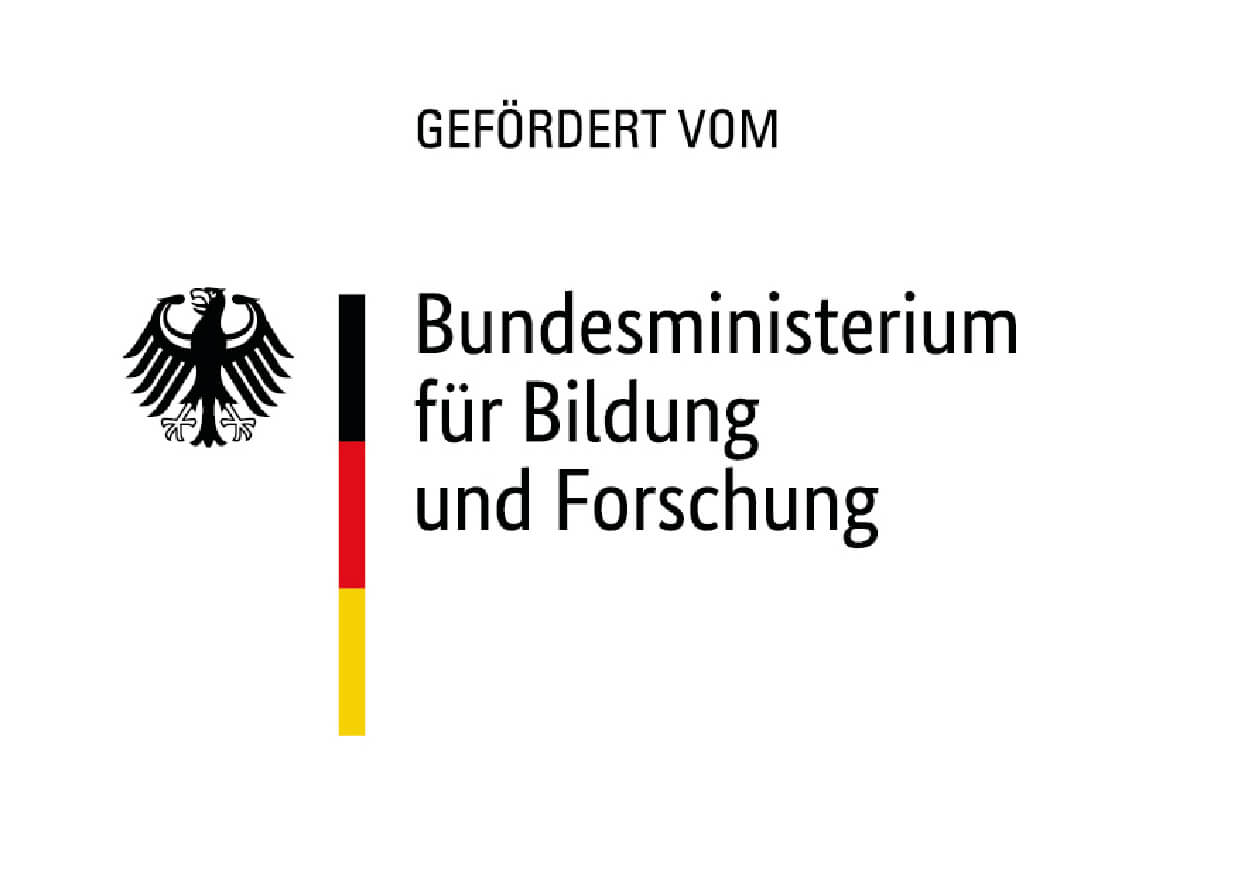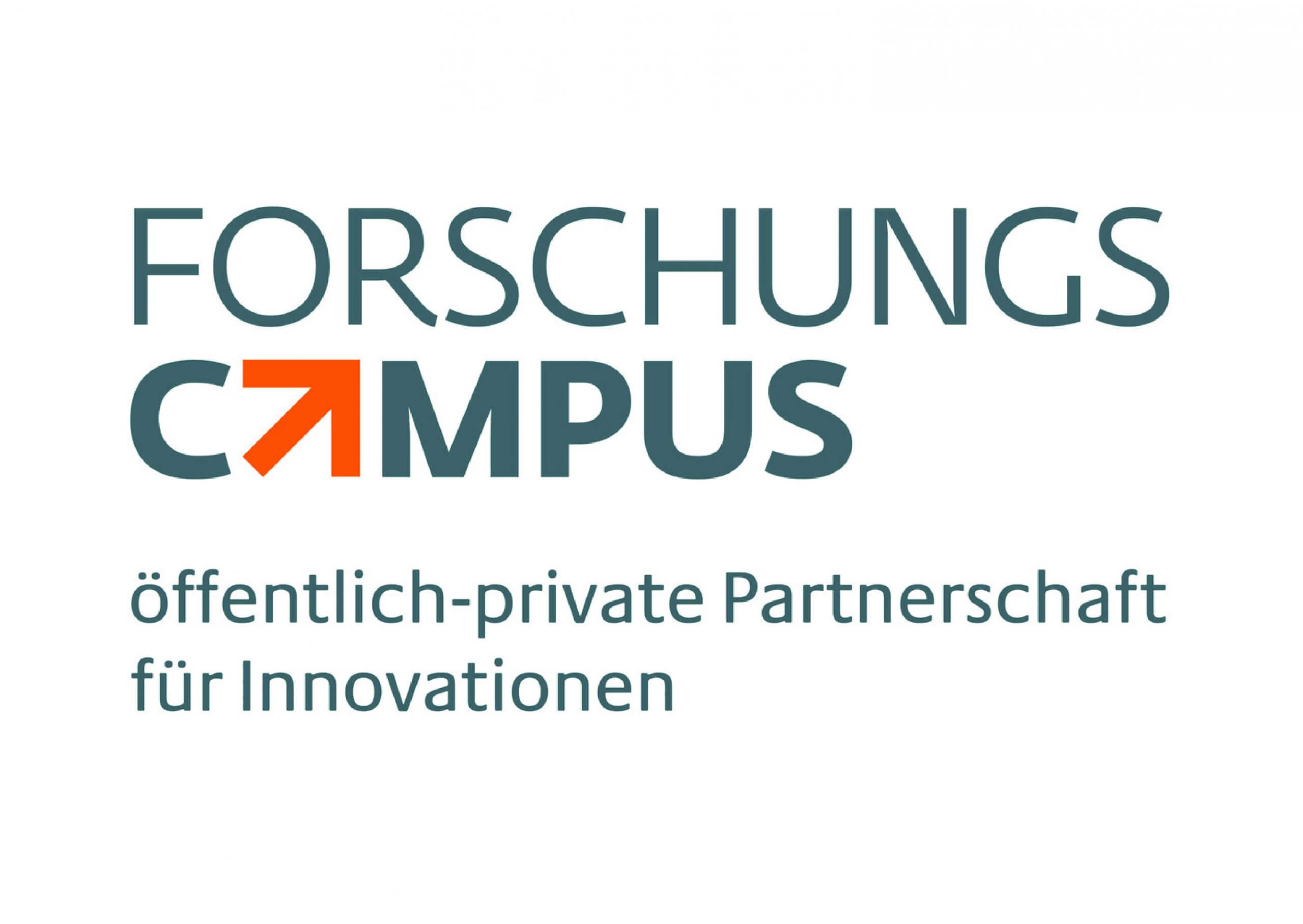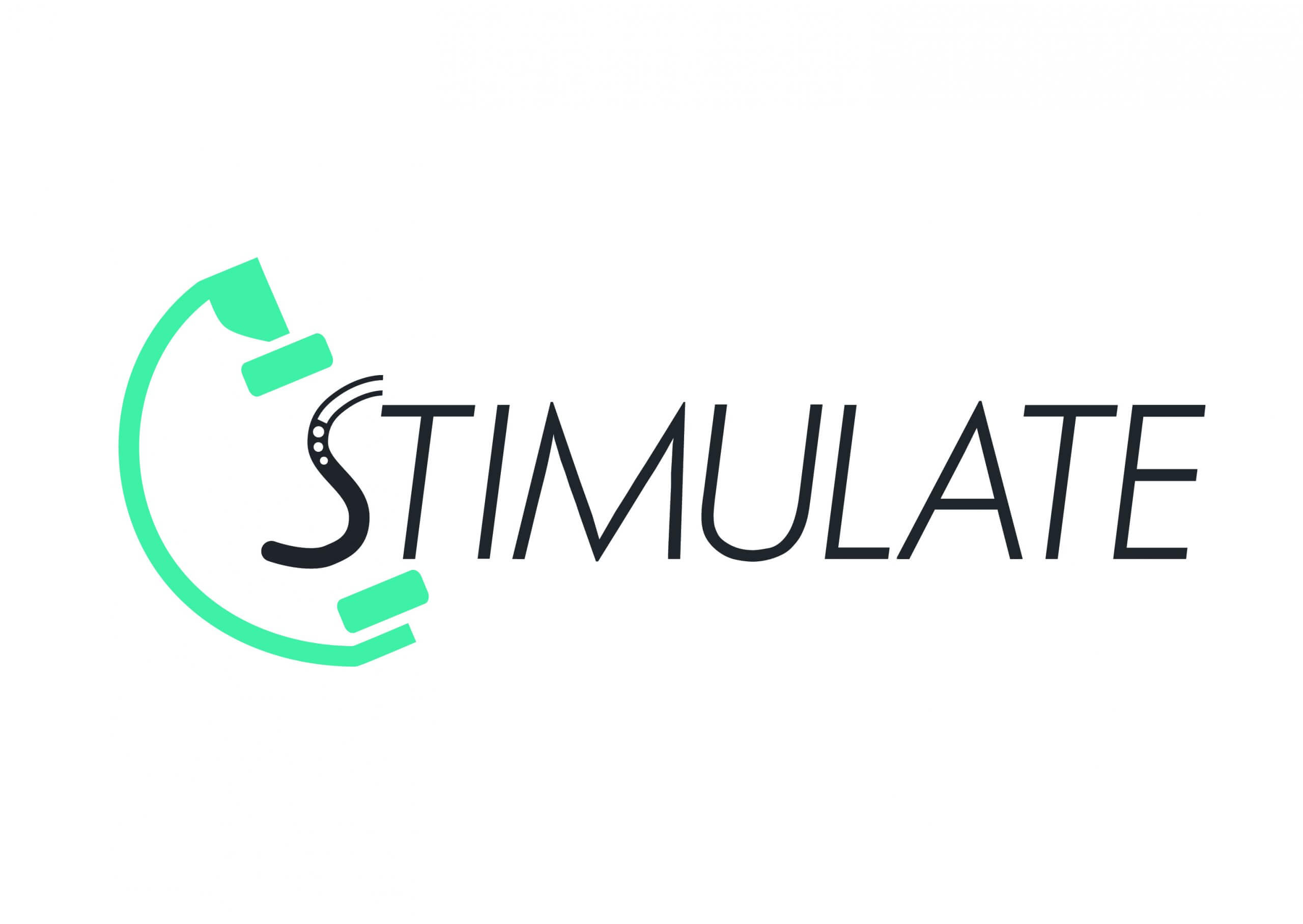Effektive Workflow-Evaluation & Interface-Design für iMRI-Planungssoftware

Transfer von Forschung in die klinische Praxis.
Wie können Prozesse in der bildgeführten Tumordiagnostik und -behandlung so vereinfacht werden, dass sowohl Patient:innen als auch medizinisches Personal entlastet werden? Und wie sieht eine fundierte Workflow Evaluation für dieses neuartige medizinische Verfahren aus?
Diese Fragen stehen im Zentrum des Forschungsprojekts STIMULATE 2, zu dem USE-Ing. seine Expertise in Usability Engineering und Human-Centered-Design eingebracht hat.
Im Gegensatz zur diagnostischen MRT erfordert die interventionelle MRT eine schnelle, intuitive Steuerung von Bildgebungsparametern — und das während der Arbeit innerhalb des MRT-Tunnels. Bestehende Systeme sind dafür zu komplex, zu langsam und zu weit von den Anforderungen der Live-Entscheidungsfindung entfernt.
In Zusammenarbeit mit international renommierten Forschungseinrichtungen und klinischen Partnern verfolgte das Projekt das Ziel, die Workflows in der bildgeführten Diagnostik und Therapie zu analysieren — und praxisnahe, nutzerzentrierte Lösungen zu entwickeln, die den Transfer von Forschung in die klinische Anwendung erleichtern.
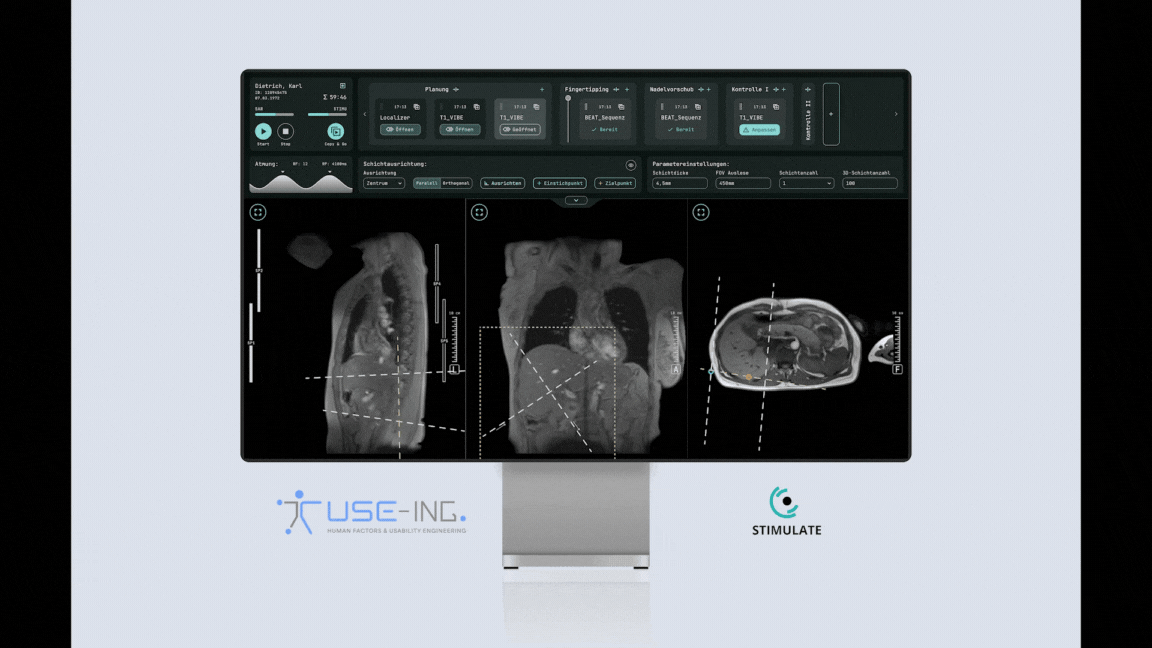
Human-Centered Design einer MRT-Bedienumgebung
Um zu verstehen und zu optimieren, wie klinisches Fachpersonal mit interventionellen MRT-Systemen (wie der interventional MRI suite von Siemens Healthineers) interagiert, hat USE-Ing. eine multimodale, Human-Centered-Design-Methode zur Erfassung und Analyse von Workflow-Prozessen während minimal-invasiver Diagnostik und Therapien entwickelt.
Gemeinsam mit Partnern der Otto-von-Guericke-Universität Magdeburg und der Medizinischen Hochschule Hannover wurde ein experimenteller Operationssaal entwickelt, der kontrollierte Evaluationen sowie die Entwicklung von Human-Machine-Interface-Prototypen für interventionelle MRT-Systeme ermöglicht.
Warum bestehende Systeme nicht ausreichen:
Es existiert bislang kein dediziertes Interface für interventionelle MRT.
Die aktuelle MRT-Steuersoftware ist aus diagnostischen Workflows heraus entstanden.
Das MRT-System ist nicht für die direkte Live-Bedienung im Magneten ausgelegt.
Die aktuelle MRT-Planungssoftware ist mit irrelevanten Optionen überladen und weist langsame Moduswechsel auf.
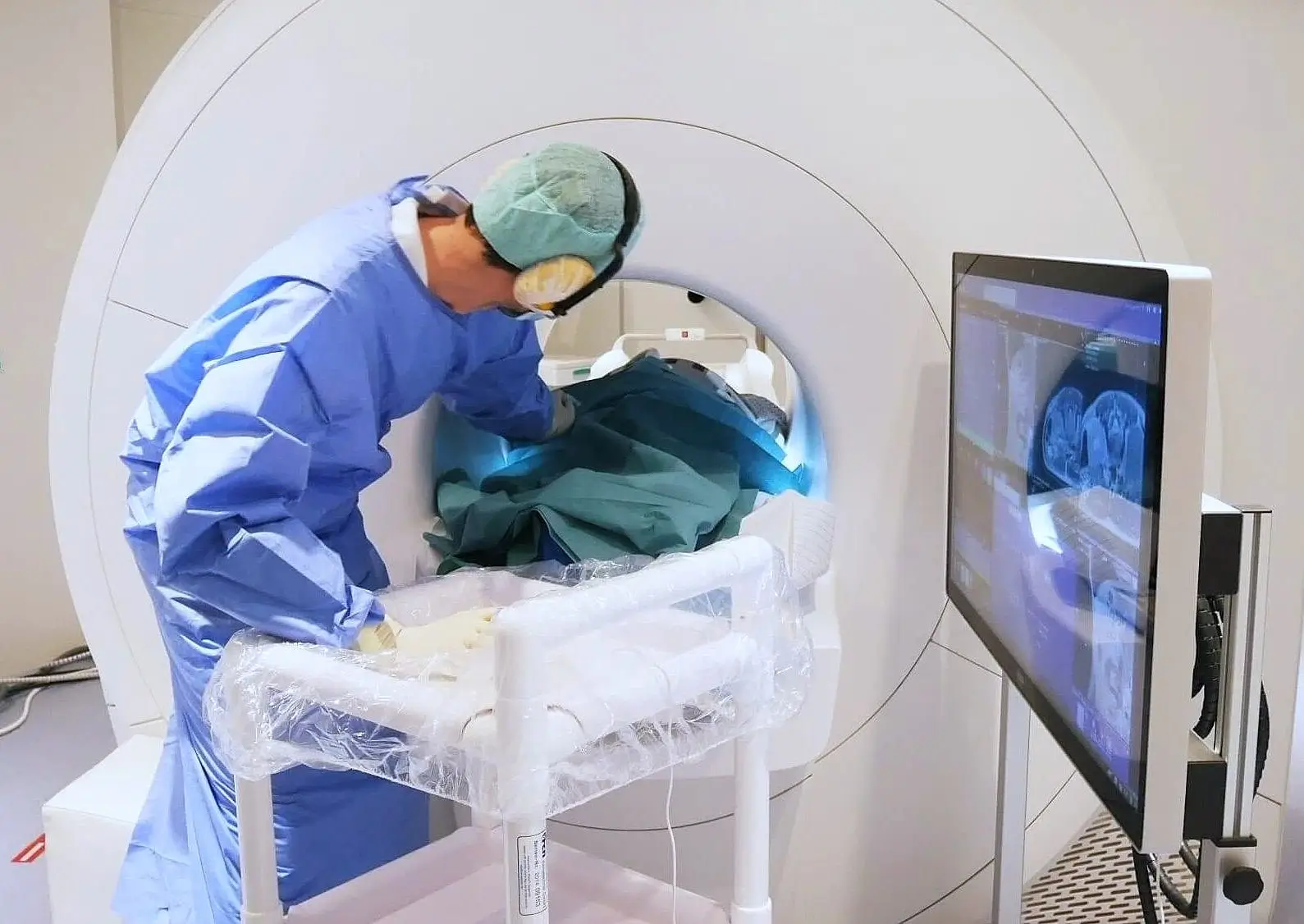
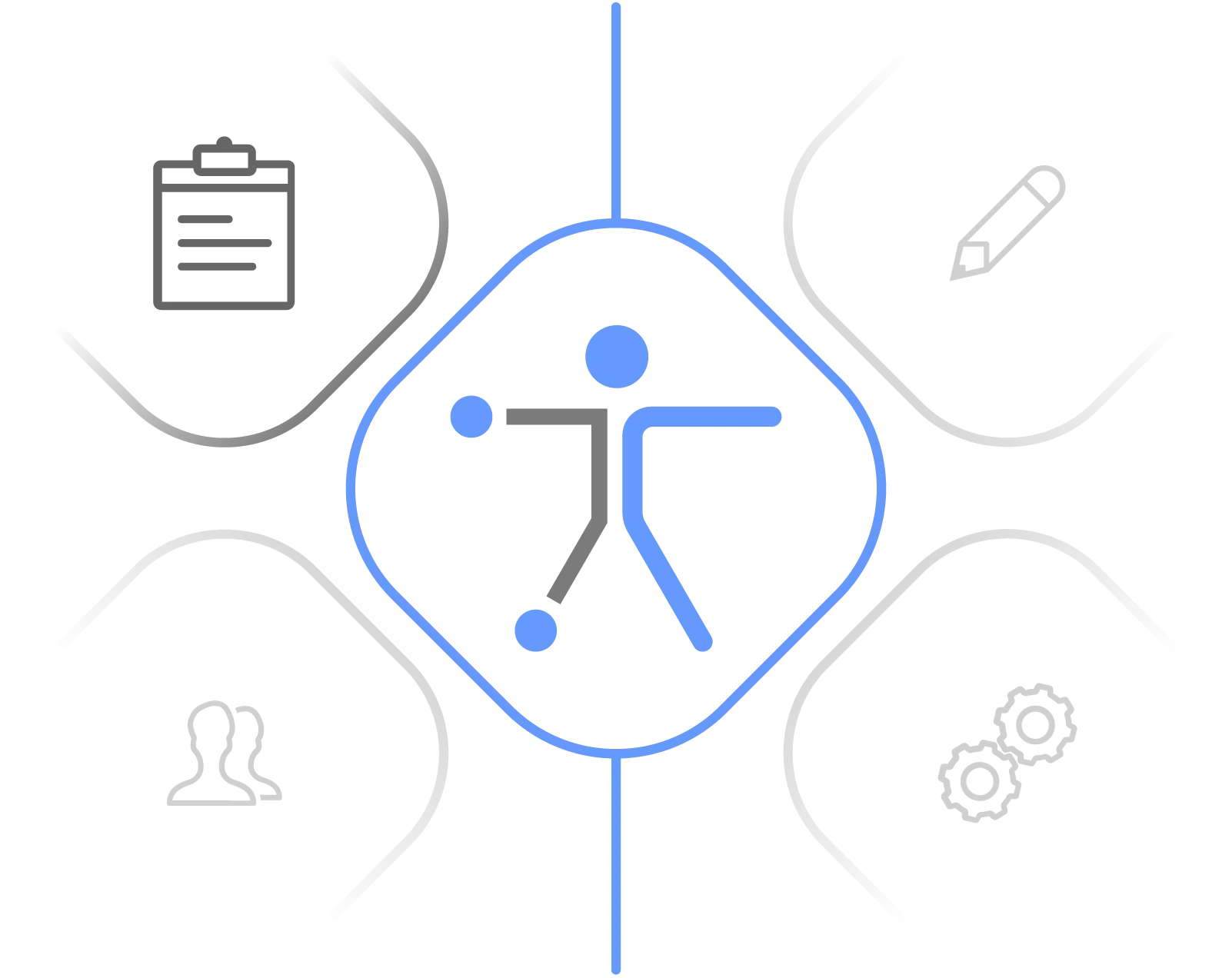
Workflow Evaluation & Usability Engineering
Von Beginn an folgte das Projekt einem evidenzbasierten Usability-Engineering-Prozess gemäß IEC 62366-1, der qualitative und quantitative Evaluationsmethoden kombiniert.
In frühen Laborsitzungen wurden Task-Walkthroughs und Verhaltensbeobachtungen anhand einer Leberbiopsie als repräsentativem Verfahren in der MRT Bedienumgebung durchgeführt, da dieses eine komplexe Koordination von bildbasierter Navigation, Nadelplatzierung und zeitkritischen Entscheidungen erfordert.
Unser nutzerzentrierter Designprozess orientierte sich an den vier Phasen der ISO 9241-210: Verstehen des Nutzungskontexts, Spezifizieren der Anforderungen, Erarbeiten von Lösungskonzepten und Evaluieren der Ergebnisse. Frühe Workflow-Analysen identifizierten Engpässe wie fragmentierte Navigation und ineffiziente Handhabung der Biopsienadel.
Um die multidimensionale Natur der Interaktion mit iMRI abzubilden, wurden klassische Usability-Tests ergänzt durch:
- Motion Tracking zur Analyse von Körperhaltungen und Bewegungen im beengten MRT-Umfeld
- Eye Tracking zur Messung von Aufmerksamkeitswechseln zwischen Bildschirmen und Interface-Elementen
- Team-basierte Simulationen zur Abbildung der realen klinischen Zusammenarbeit
- Erste Use-Error-Analysen in Anlehnung an ISO 14971
Diese Methoden machten zentrale Engpässe sichtbar – darunter übersehene Funktionen, visuelle Überlastung unter Stress sowie Aufgabenkonflikte zwischen Teammitgliedern – die direkt in die nächste Designiteration eingeflossen sind.
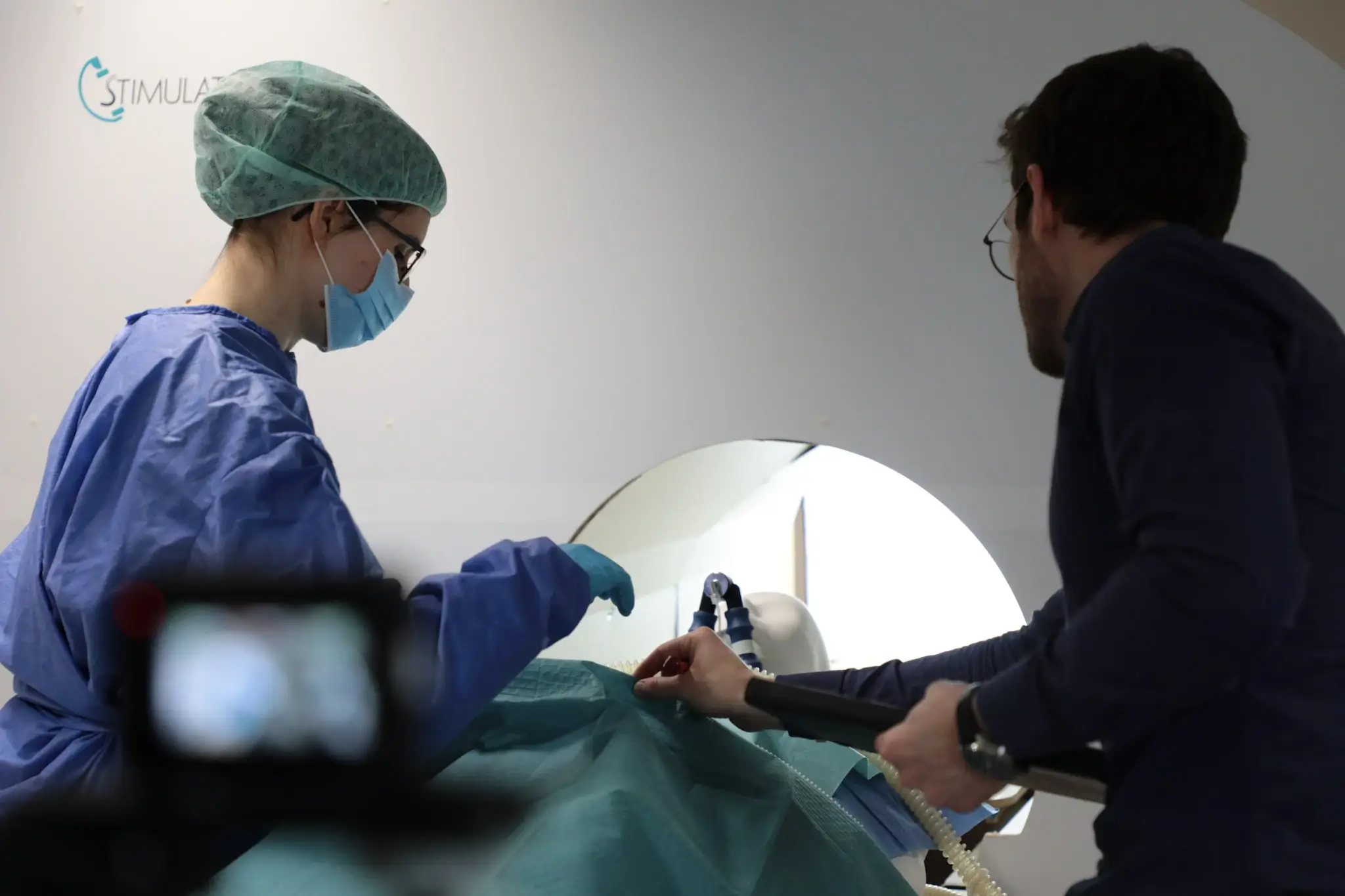
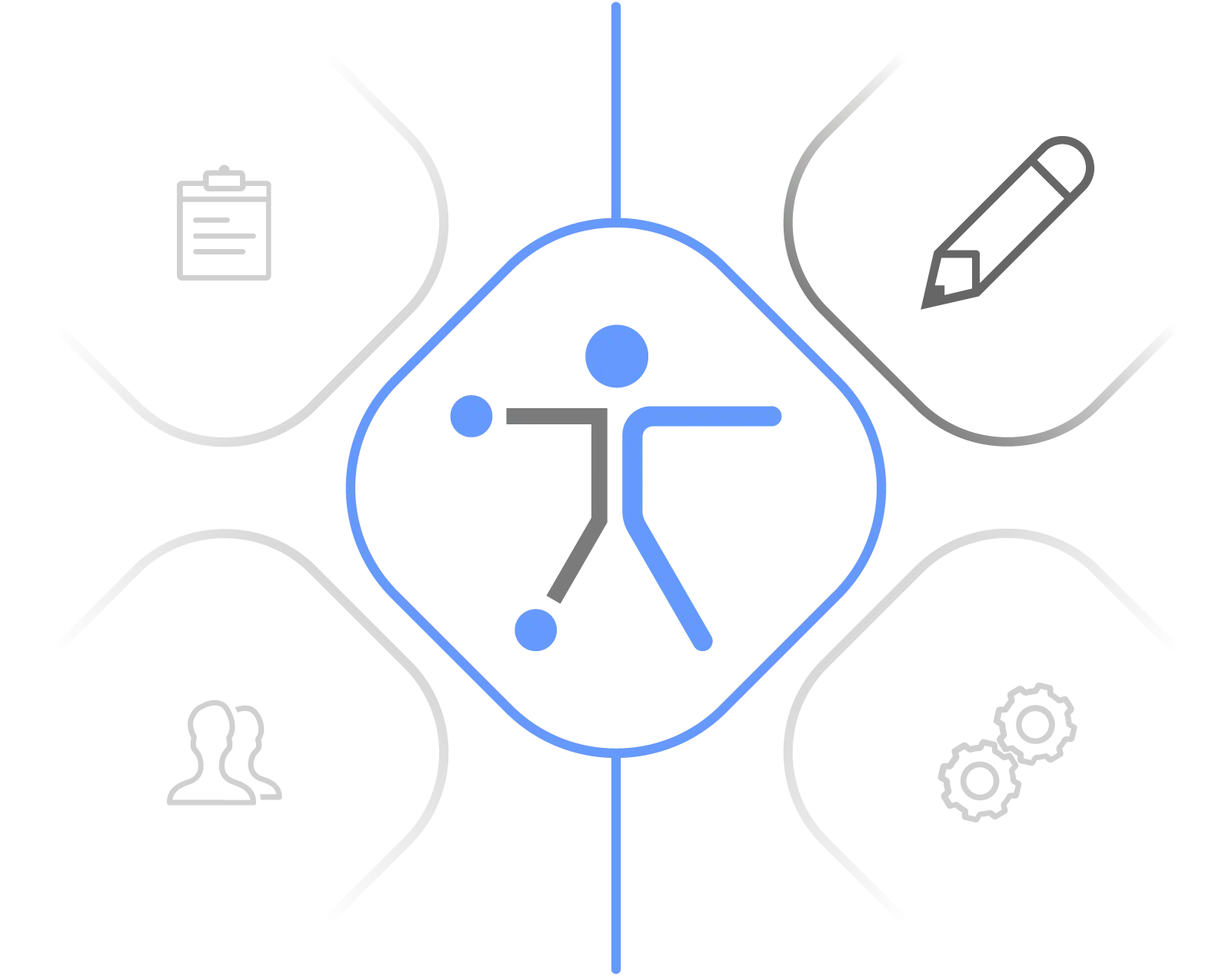
GUI-Prototyp: UX-& Interface-Design der In-Bore-Interaktion
Die Erkenntnisse aus den simulierten Interventionen flossen im Rahmen des User-Interface-Designs in einen neuen Prototyp ein, der speziell für interventionelle MRT entwickelt wurde.
Klassische MRT-Steuersoftware, die primär für diagnostische Anwendungen ausgelegt ist, erwies sich für Live-Eingriffe als ungeeignet – mit zu vielen Konfigurationsoptionen, häufigen Moduswechseln und unzureichender Unterstützung zeitkritischer Aktionen.
USE-Ing. entwickelte daher einen domänenspezifischen Prototyp, der auf prozedurale Effizienz und klinische Relevanz fokussiert. Er basiert auf drei zentralen Designprioritäten:
Needle Path Planning – Die Radiologin bzw. der Radiologe kann Ein- und Zielpunkte direkt im MRT-Gantry anpassen. Echtzeit-Feedback verhindert Menüwechsel und unterstützt einen sterilen Workflow.
Sequence Handling – Eine kartenbasierte Oberfläche bündelt Sequenzwahl, Bearbeitung und Organisation an einem Ort.
Adaptive Top Bar – Eine adaptive obere Leiste ersetzt starre Seitenleisten und maximiert die Bildfläche während der Live-Navigation.
Das Interface folgte den vier Phasen des Human-Centered-Design-Process gemäß ISO 9241-210 und integrierte Aktivitäten des Usability Engineerings nach IEC 62366 und ISO 14971. Iterative Evaluationszyklen mit Feedback von Klinikern, Ingenieur:innen und MRT-Spezialist:innen verfeinerten das Design sowie die Interaktionslogik kontinuierlich.
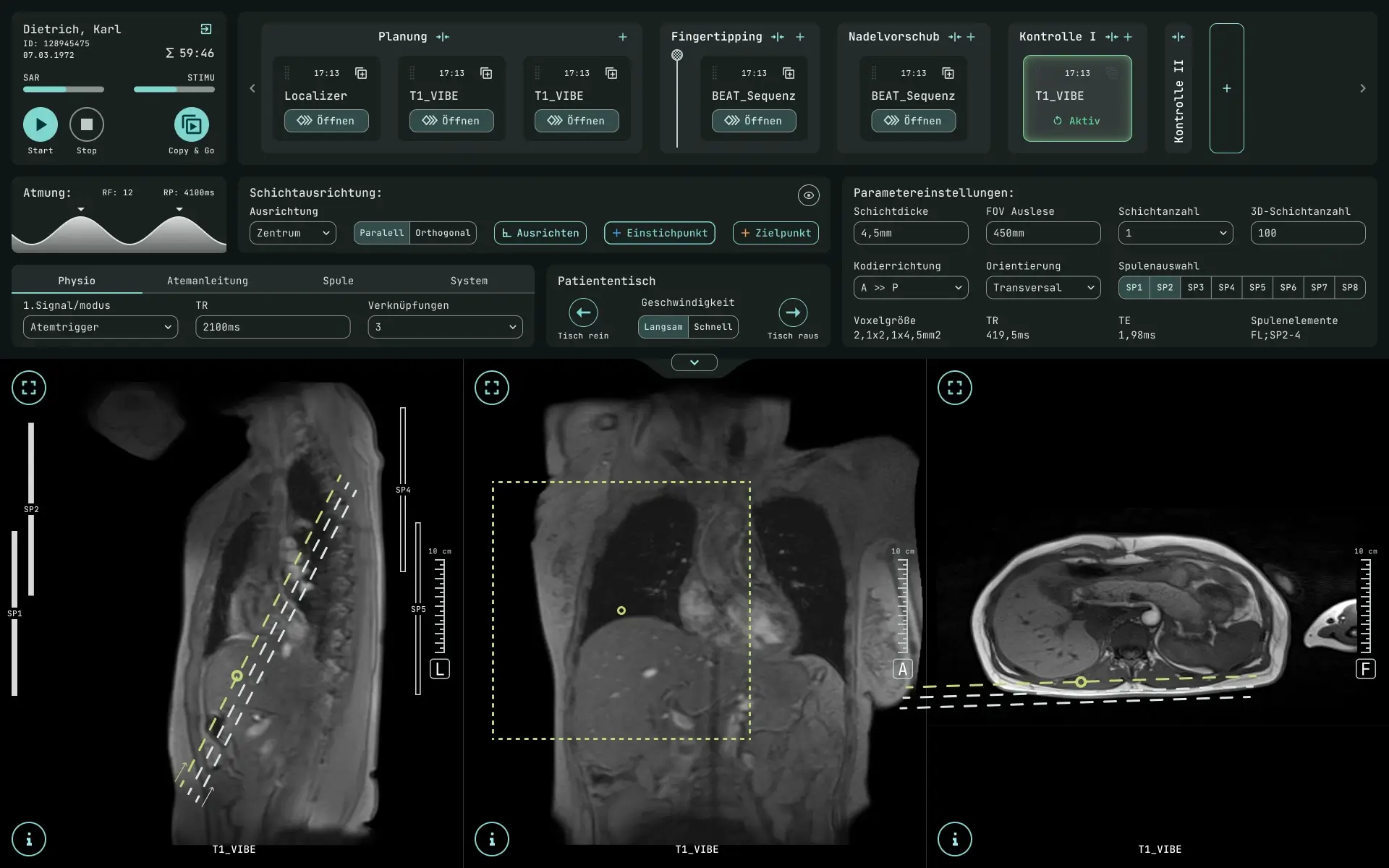
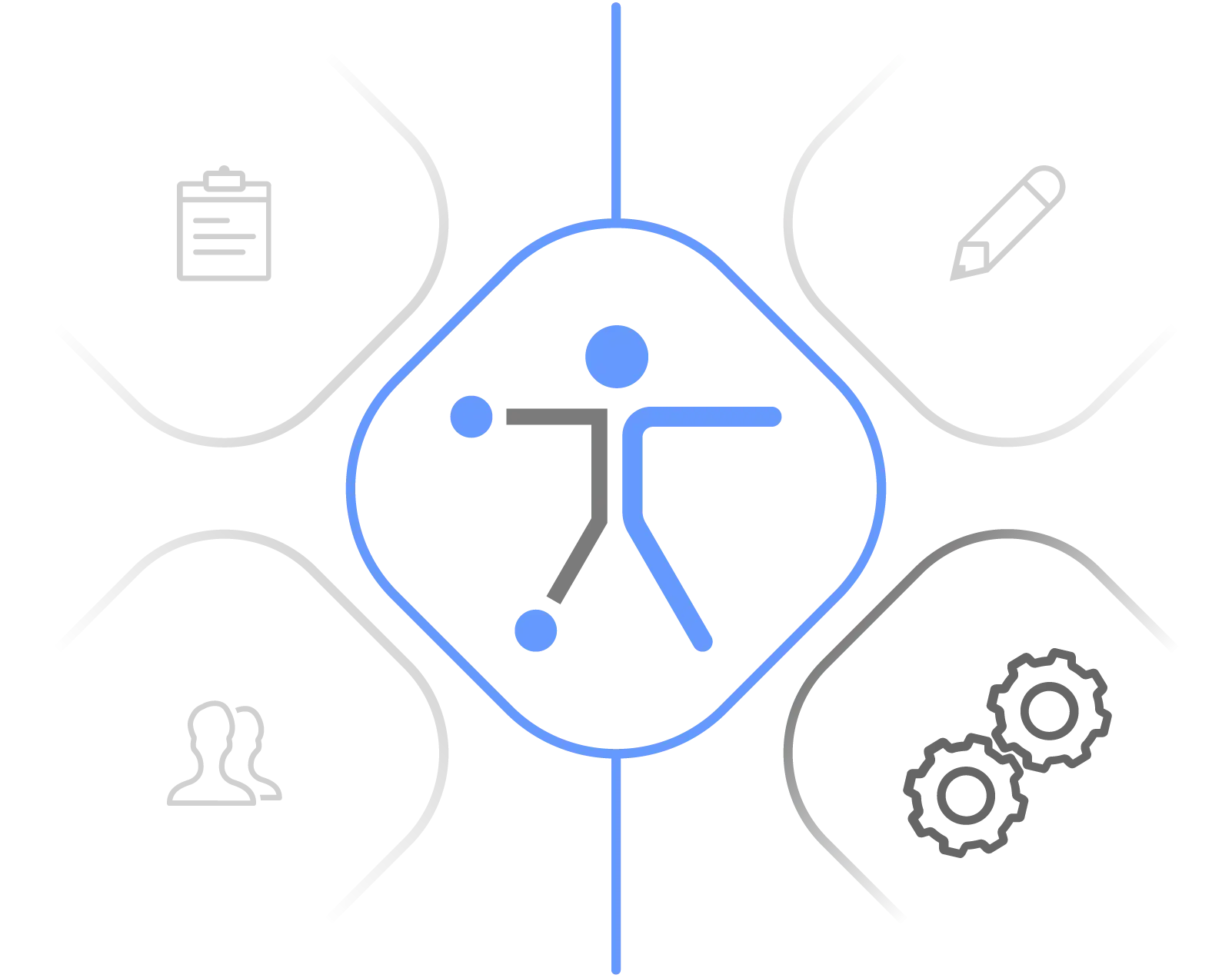
Formative Evaluation: getestet unter realistischen, zeitkritischen Bedingungen
Der High-Fidelity-GUI-Prototyp durchlief eine formative Usability-Evaluation mit interventionellen Radiolog:innen und Medizinisch-Technischen Radiologieassistent:innen (MTRA) in einer zeitkritischen Simulation, die den realen Stressbedingungen eines Eingriffs nachempfunden war.
Die Studie umfasste:
Simulierte Aufgabenabfolgen (z. B. Patientenvorbereitung, Sequenzwahl, Planung der Nadeltrajektorie)
Eye-Tracking- und Motion-Capture-Datenerfassung
Beobachtungsbasierte Walkthroughs und Interviews nach Abschluss der Aufgaben
Die Tests wurden so gestaltet, dass sie die realen Teamdynamiken zwischen Radiolog:in und Assistenz (MTRA) abbilden. Dadurch konnten wertvolle Erkenntnisse zu Koordination, Timing und gegenseitiger Wahrnehmung gewonnen werden.
Die Teilnehmenden hoben durchgehend eine verbesserte Übersichtlichkeit, intuitive Arbeitsabläufe und einen schnelleren Zugang zu zentralen Bedienelementen hervor — insbesondere bei der Anpassung des Nadelpfads und der Sequenzplanung. Diese Bereiche zeigten deutliche Usability-Verbesserungen im Vergleich zu herkömmlichen MRT-Interfaces.
Die formative Usability-Evaluation simulierte realistische iMRI-Szenarien unter Zeitdruck mit interventionellen Radiolog:innen und MTRAs. Die Teilnehmenden betonten die gesteigerte Klarheit, die schnellere Sequenzsteuerung und die intuitive Trajektorienhandhabung — und bestätigten damit messbare Verbesserungen der Prozesseffizienz und des Nutzervertrauens.
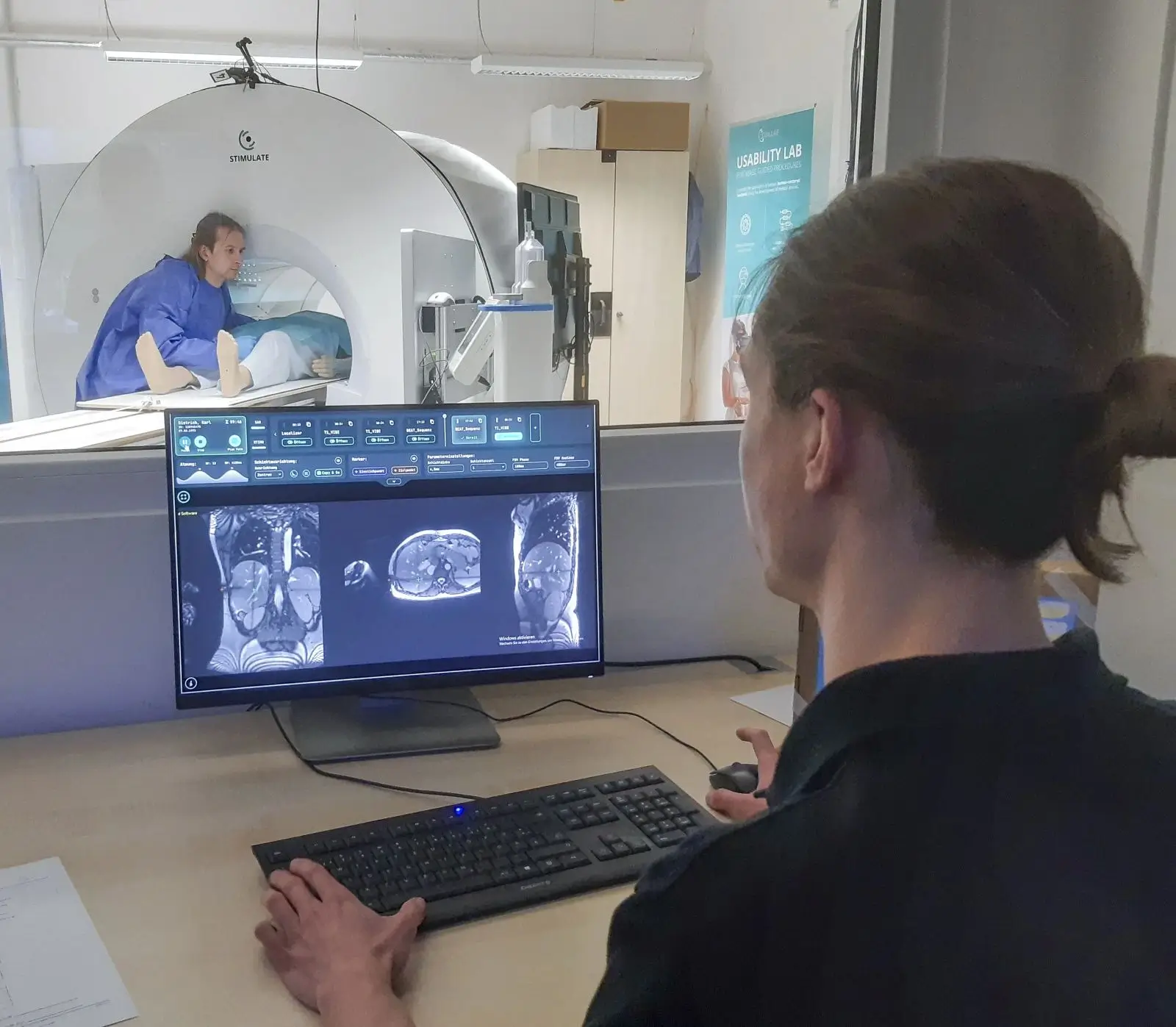
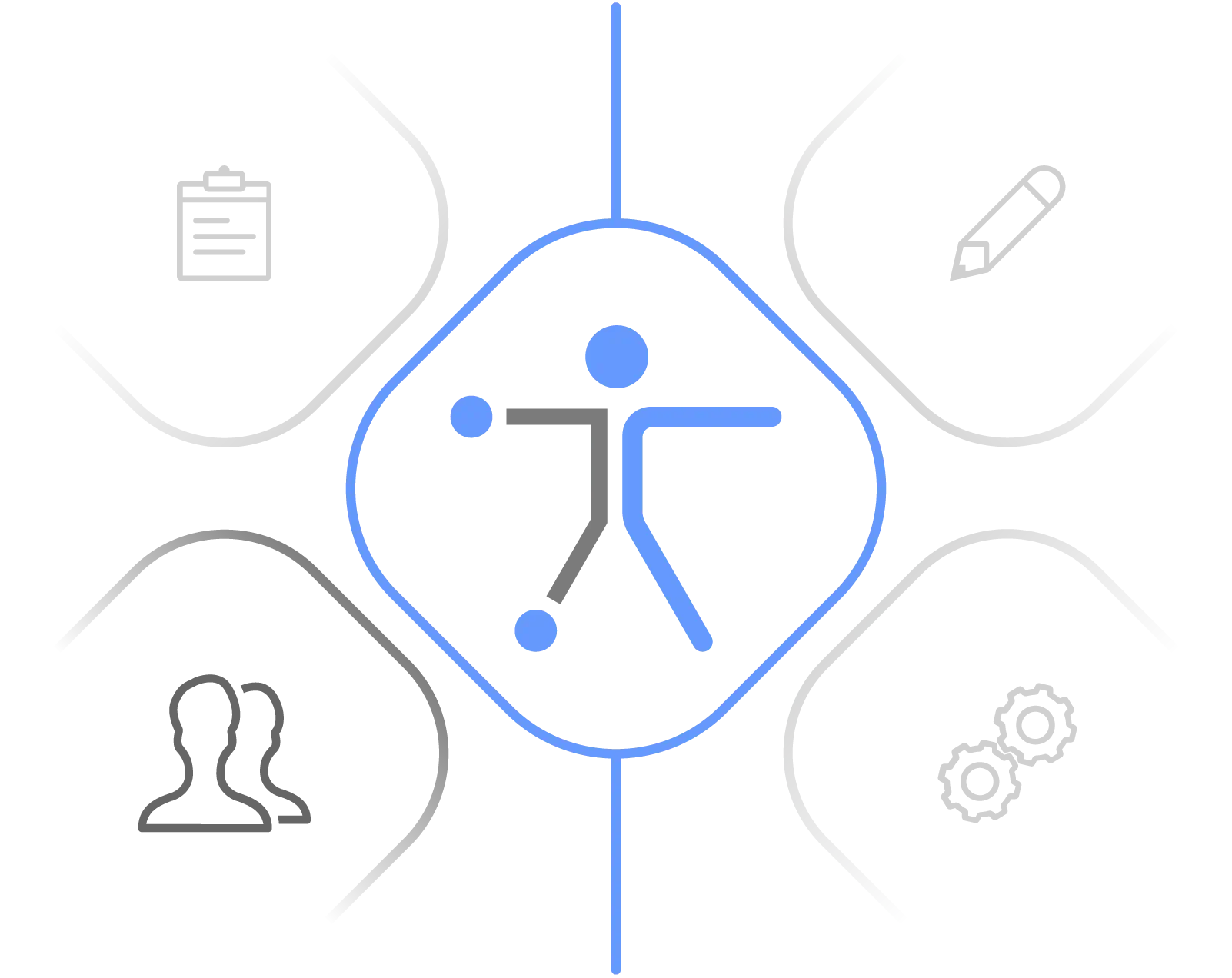
Einbindung von Human Factors in die Innovation der medizinischen Bildgebung
Dieses Projekt zeigt, wie gezielte Human-Factors-Engineering-Methoden Forschungsprototypen in vielversprechende Lösungen überführen, die in realen klinischen iMRI-Workflows evaluiert werden — und beweist, dass selbst hochkomplexe MRT-Workflows durch nutzerzentriertes Design intuitiv und fehlertolerant gestaltet werden können.
Im Rahmen von STIMULATE 2 trägt USE-Ing. dazu bei, die nächste Generation interventioneller MRT-Systeme zu entwickeln — basierend auf empirischen Usability-Daten, multimodalen Analysen und enger klinischer Zusammenarbeit.
Unsere Mission in diesem Projekt: humanzentrierte iMRI-Forschung in Technologien zu übersetzen, die Radiolog:innen und MTRAs unterstützen und die Patientenversorgung verbessern.
Erfahren Sie mehr über unsere Usability-Engineering-Services für Medizinprodukte.
ChatGPT:
Forschungscampus STIMULATE, Teilprojekt: Workflow-Evaluation und Interface-Design für iMRI-Lösungen, Förderkennzeichen: 13GW0473D

